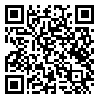Volume 1, Issue 1 (11-2019)
pbp 2019, 1(1): 36-38 |
Back to browse issues page
Download citation:
BibTeX | RIS | EndNote | Medlars | ProCite | Reference Manager | RefWorks
Send citation to:



BibTeX | RIS | EndNote | Medlars | ProCite | Reference Manager | RefWorks
Send citation to:
Beiranvand F, Alizadeh M. Plants for Remedies of Diabetes Mellitus in Iran. pbp 2019; 1 (1) :36-38
URL: http://pbp.medilam.ac.ir/article-1-7-en.html
URL: http://pbp.medilam.ac.ir/article-1-7-en.html
1- Immunology Research Center, Tabriz University of Medical Sciences, Tabriz, Iran
2- Immunology Research Center, Tabriz University of Medical Sciences, Tabriz, Iran ,m.alizadeh5667@gmail.com
2- Immunology Research Center, Tabriz University of Medical Sciences, Tabriz, Iran ,
Abstract: (4717 Views)
Diabetes mellitus is a disease occurs when blood glucose is too high. Blood glucose is the main source of energy comes from the food. Insulin, a hormone made by the pancreas, helps glucose get into the cells to be used for energy. Sometimes body doesn’t make enough or any insulin or doesn’t use insulin well. Glucose then stays in blood and doesn’t reach cells. Diabetes, various cardiovascular complications, wounds, kidney problems, and many other diseases are chronic. Natural and plant-based antioxidants are more frequently used for treatment of diabetes. Herbal medicine, Cinnamomum zeylanicum Blume, Allium sativum L., Allium cepa L., Momordica charantia L., Trigonella foenum-graecum L., Zingiber officinale Roscoe, Curcuma longa L., Silybum marianum (L.) Gaertn., Citrullus colocynthis (L.) Schrad., Aloe vera (L.) Burm.f., Camellia sinensis (L.) Kuntze, Eugenia caryophylata Thunb., Mentha pulegium L., Urtica dioica L., Teucrium polium L., Ocimum basilicum L., Matricaria chamomilla L., Cuminum cyminum L., Taraxacum officinale (L.) Weber ex F.H.Wigg., Anethum graveolens L., Anethum graveolens L., Rosmarinus officinalis L., Thymus vulgaris L., Artemisia dracunculus L., Ficus carica L., Nigella sativa L., Olea europaea L., and Vitis vinifera L. are among the phytotherapies for diabetes.
Type of Study: Letter to editor |
Subject:
Herbal Drugs
Received: 2019/09/24 | Accepted: 2019/10/3 | Published: 2019/11/20
Received: 2019/09/24 | Accepted: 2019/10/3 | Published: 2019/11/20
References
1. Roglic G, Norris SL. Medicines for treatment intensification in type 2 diabetes and type of insulin in type 1 and type 2 diabetes in low-resource settings: synopsis of the world health organization guidelines on second- and third-line medicines and type of insulin for the control of blood glucose levels in nonpregnant adults with diabetes mellitus. Ann Intern Med. 2018; 169:394-397. [DOI:10.7326/M18-1149]
2. Capatina C, Paluzzi A, Mitchell R, Karavitaki N. Diabetes insipidus after traumatic brain injury. J Clin Med. 2015; 4: 1448-62. [DOI:10.3390/jcm4071448]
3. Varan A, Atas E, Aydin B, Yalçin B, Akyüz C, Kutluk T, et al. Evaluation of patients with intracranial tumors and central diabetes insipidus. Pediatr Hematol Oncol. 2013; 30: 668-73. [DOI:10.3109/08880018.2013.816984]
4. Yang Y and Chan L. Monogenic Diabetes: What It Teaches Us on the Common Forms of Type 1 and Type 2 Diabetes. Endocr Rev. 2016; 37(3): 190-222. [DOI:10.1210/er.2015-1116]
5. Kumar A, Aswal S, Chauhan A, Semwal RB, Kumar A, Semwal DK. Ethnomedicinal Investigation of Medicinal Plants of Chakrata Region (Uttarakhand) Used in the Traditional Medicine for Diabetes by Jaunsari Tribe. Nat Prod Bioprospect. 2019; 9(3): 175-200. [DOI:10.1007/s13659-019-0202-5]
6. Barkaoui M, Katiri A, Boubaker H, Msanda F. Ethnobotanical survey of medicinal plants used in the traditional treatment of diabetes in Chtouka Ait Baha and Tiznit (Western Anti-Atlas), Morocco. J. Ethnopharmacol. 2017; 198: 338-350. [DOI:10.1016/j.jep.2017.01.023]
Send email to the article author
| Rights and permissions | |
 |
This work is licensed under a Creative Commons Attribution-NonCommercial 4.0 International License. |







